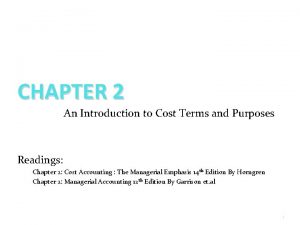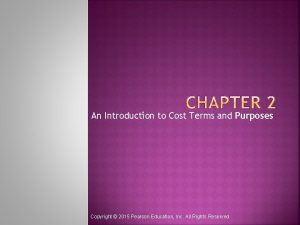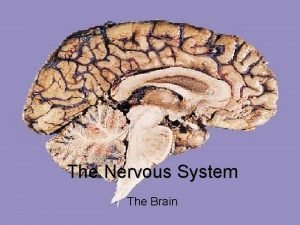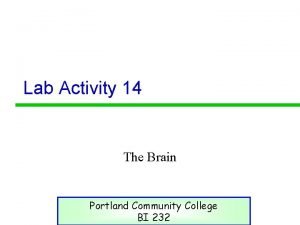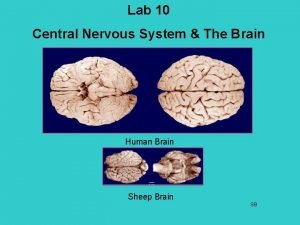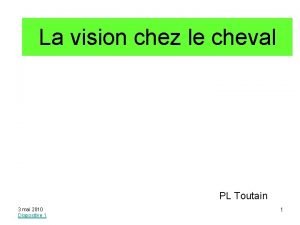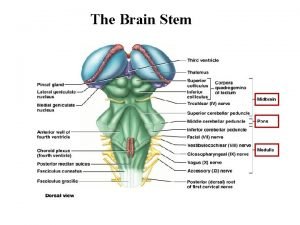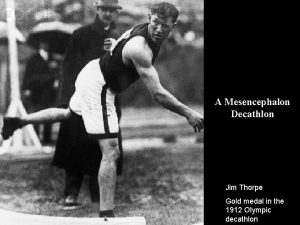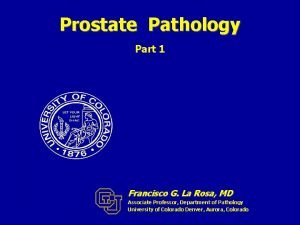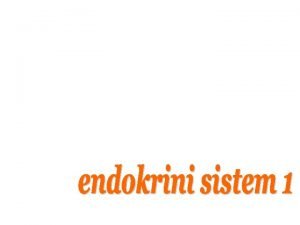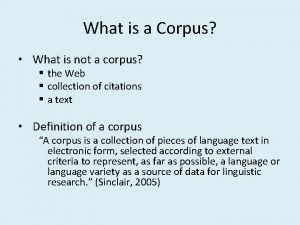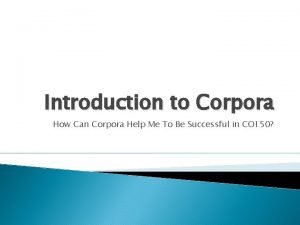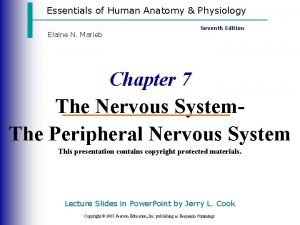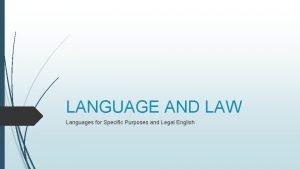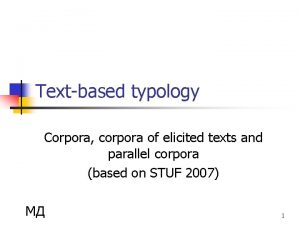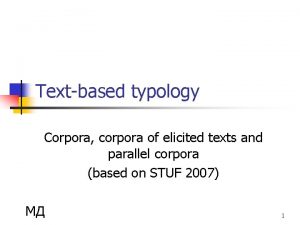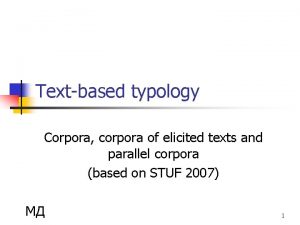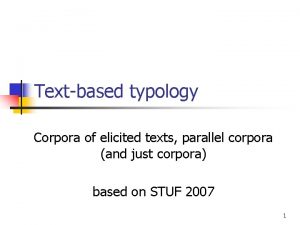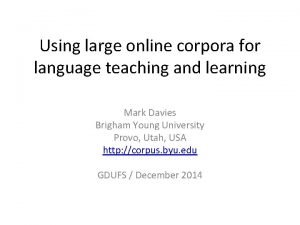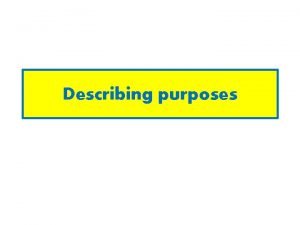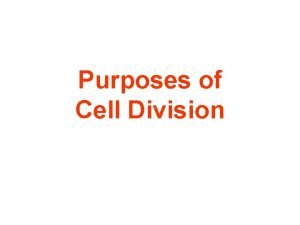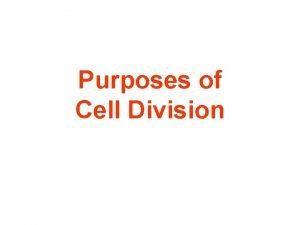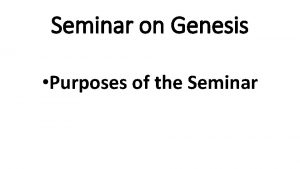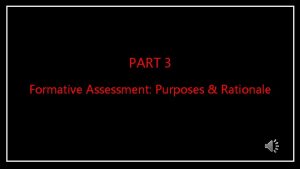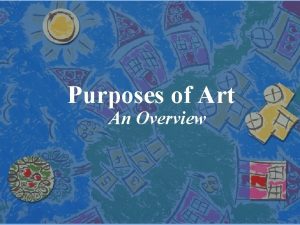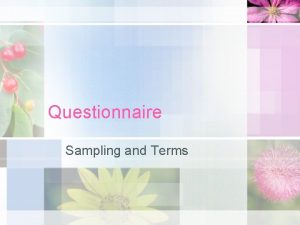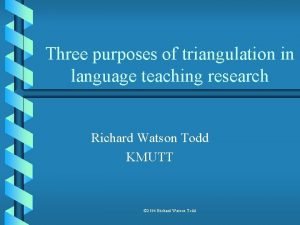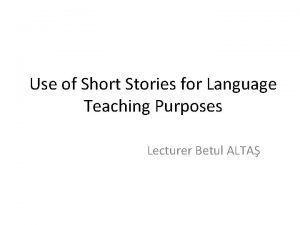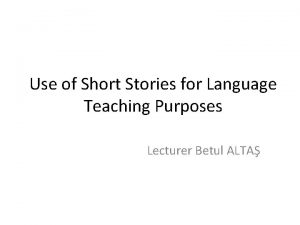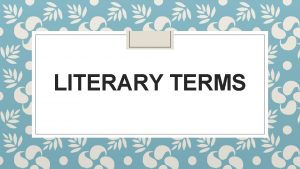Corpora and Teaching Language for Special Purposes Terms




























- Slides: 28

Corpora and Teaching Language for Special Purposes

Terms • język specjalistyczny • sublanguage, scientific (technical) language, special subject language, special language, language for special purposes (LSP) • Fachsprache • lange de spécialité

Definition Język specjalistyczny to “szczególna postać języka ogólnonarodowego, przystosowana do możliwie precyzyjnego opisu określonej gałęzi wiedzy lub techniki. Różni się od języka ponaddialektalnego przede wszystkim słownictwem fachowym, niejednokrotnie zawierającym wiele internacjonalizmów, oraz składnią, jak również częstotliwością użycia określonych form gramatycznych (np. passivum w niemieckim języku technicznym) (Szulc 1984: 104 w Roskowski 2005: 174)

Characteristic features • Określony zakres tematyczny ograniczony do danej dziedziny • Ograniczenia struktury leksykalnej, składniowej i semantycznej • Niestandardowe zasady gramatyczne • Wysoka częstotliwość występowania niektórych konstrukcji • Specyficzne cechy struktury tekstowej • Wykorzystanie specjalnych symboli (Lehrberger 1886, 1982: 102 w Roszkowski 2005: 176)

• Different levels of specialisation – English for academic purposes vs. English for chemistry – English for medical purposes vs. English for urology

Teaching LSP • Lack of textbooks or other teaching materials • Teacher’s lack of expertise

How can corpora help? • Syllabus design • Production of teaching materials -authentic examples – Text types – Vocabulary and grammar in context

Types of corpora helpful in teaching LSP • subcorpora (sections of general corpora) e. g. section J of Brown or LOB • special corpora (Air Trafic Control Corpus) • monolingual corpora • bilingual corpora – comparable – parallel

Example 1 Academic language

Verb frequencies

Academic Word List • developed at the School of Linguistics and Applied Language Studies at Victoria University of Wellington, New Zealand • purpose: to be used by teachers and students working alone as part of a preparation for tertiary level study • Coxhead, Averil (2000) A New Academic Word List. TESOL Quarterly, 34(2): 213 -238 • http: //www. victoria. ac. nz/lals/resources/acade micwordlist/

Academic corpus • a written corpus of academic English • approximately 3, 500, 000 running words • divided into four faculty sections: Arts, Commerce, Law and Science • Each of these faculty sections contained approximately 875, 000 running words. • Each faculty section was divided into seven subject areas of approximately 125, 000 running words.


Selection criteria • The AWL contains 570 word families • Range. The AWL families had to occur in the Arts, Commerce, Law and Science faculty sections of the Academic Corpus (see below for details on the Academic Corpus). The word families also had to occur in over half of the 28 subject areas of the Academic Corpus. Just over 94% of the words in the AWL occur in 20 or more subject areas. This principle ensures that the words in the AWL are useful for all learners, no matter what their area of study or what combination of subjects they take at tertiary level.

Selection criteria • Frequency. The AWL families had to occur over 100 times in the 3, 500, 000 word Academic Corpus in order to be considered for inclusion in the list. This principle ensures that the words will be met a reasonable number of times in academic texts. • Uniformity of frequency. The AWL families had to occur a minimum of 10 times in each faculty of the Academic Corpus to be considered for inclusion in the list. This principle ensures that the vocabulary is useful for all learners.

Words excluded from the AWL • Words occurring in the first 2, 000 words of English. The AWL assumes knowledge of West's General Service List (GSL) (1953) as the basic vocabulary any learner should have before starting to learn academic vocabulary. • Narrow range words. Words which occurred in fewer than 4 faculty sections of the Academic Corpus or which occurred in fewer than 15 of the 28 subject areas of the Academic Corpus were excluded because they had narrow range. Technical or specialist words often have narrow range and were excluded on this basis

Words excluded from the AWL • Proper nouns. The names of places, people, countries, for example, New Zealand, Jim Bolger and Wellington were excluded from the list. • Latin forms. Some of the most common Latin forms in the Academic Corpus were et al, etc, ie, and ibid.

Example 2 Język umów

(Roszkowski 2005: 184)

Patterns of word frequencies Frequency

Example 3 English for Biology

Corpus of English for Biology • source: Flowerdew 2001 • purpose: course design – the selection and grading of items for the syllabus – the authentic contextualization of theses items in teaching materials • teaching situation: – science students at the English-medium Sultan Quaboos University, Oman; foundation course – science course and English course • corpus: transcripts of 25 hours of lectures in biology + supporting reading material • size 104, 483 tokens

Example (Flowerdew 2001: 79)

Example 4 My project English for Urology

Design criteria

Analysis • • wordlist keyword list of clusters collocations

Terminology extraction • wordlists • clusters • keywords http: //www. ling. pl/

Examples of comparable corpora • Multext – http: //www. lpl. univ-aix. fr/projects/multext/ • Multext-East – http: //nl. ijs. si/ME/
 Chapter 2 an introduction to cost terms and purposes
Chapter 2 an introduction to cost terms and purposes Inventoriable costs examples
Inventoriable costs examples Micro teaching is a scaled down teaching
Micro teaching is a scaled down teaching Identify the structure labeled 7
Identify the structure labeled 7 Sheep brain corpora quadrigemina
Sheep brain corpora quadrigemina Foramen interventriculare
Foramen interventriculare Champ visuel cheval
Champ visuel cheval Representativeness in corpus design
Representativeness in corpus design What is a corpus
What is a corpus What is the brainstem
What is the brainstem Corpora quadrigemina pronunciation
Corpora quadrigemina pronunciation Corpora amylacea
Corpora amylacea Corpora aranacea
Corpora aranacea What is corpus
What is corpus Help
Help Stephen hawking
Stephen hawking Polynomial degrees and terms
Polynomial degrees and terms Identify the terms and like terms in the expression. t+8+3t
Identify the terms and like terms in the expression. t+8+3t English for specific purposes law
English for specific purposes law Formuö
Formuö Typiska drag för en novell
Typiska drag för en novell Nationell inriktning för artificiell intelligens
Nationell inriktning för artificiell intelligens Returpilarna
Returpilarna Varför kallas perioden 1918-1939 för mellankrigstiden?
Varför kallas perioden 1918-1939 för mellankrigstiden? En lathund för arbete med kontinuitetshantering
En lathund för arbete med kontinuitetshantering Kassaregister ideell förening
Kassaregister ideell förening Tidbok yrkesförare
Tidbok yrkesförare A gastrica
A gastrica Förklara densitet för barn
Förklara densitet för barn
